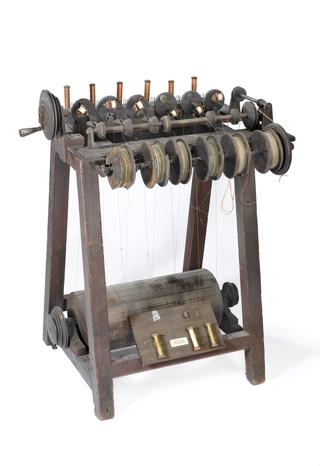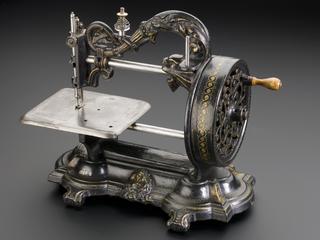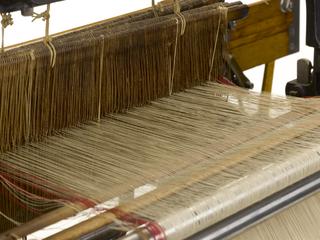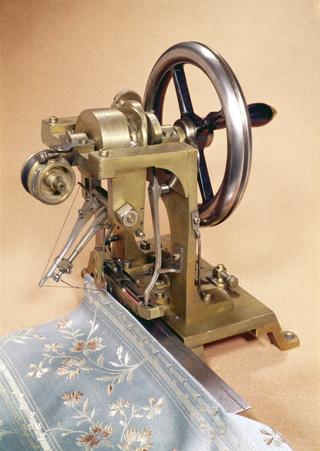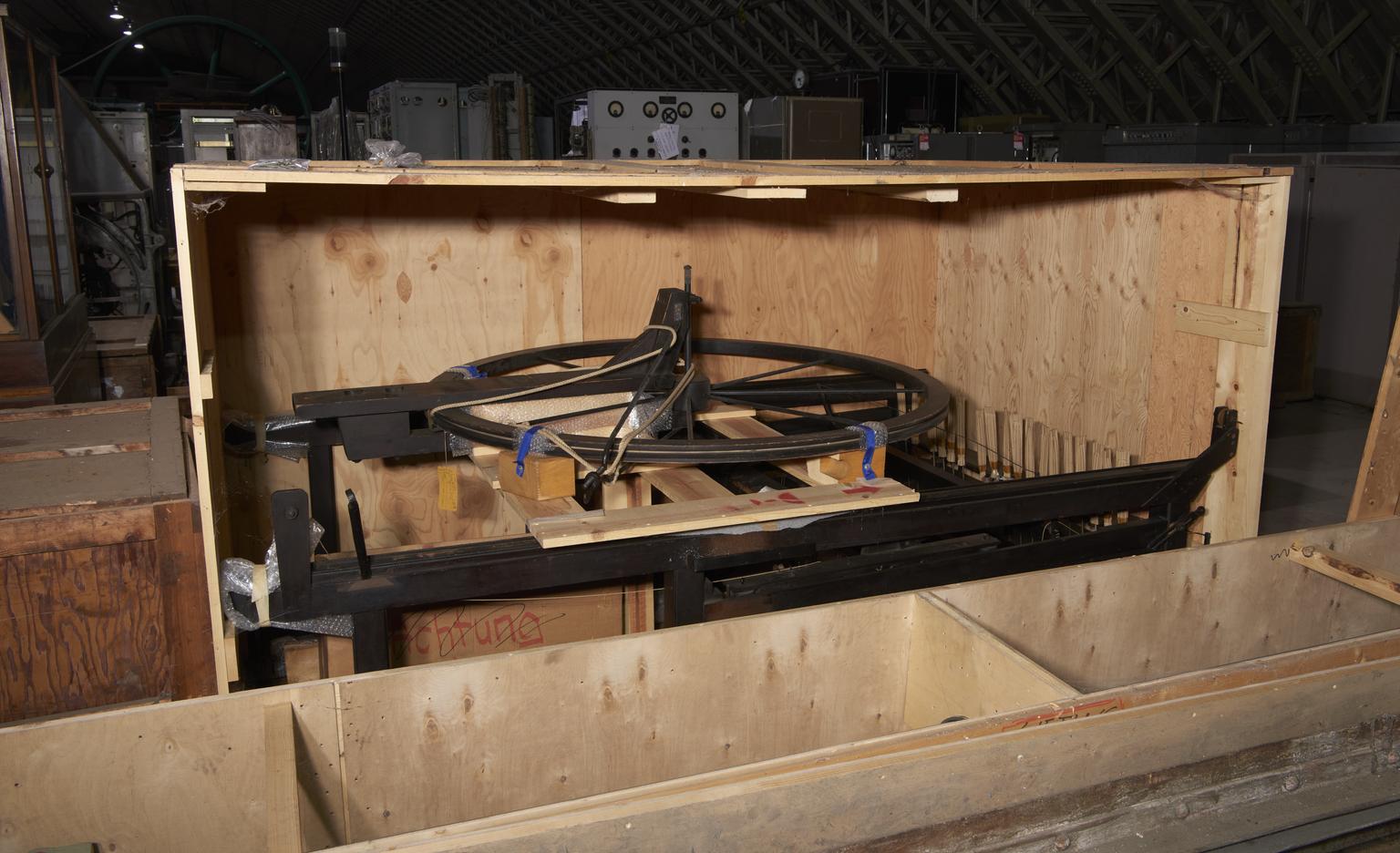
Replica of Hargreaves' Spinning Jenny, with spare wooden spindles, original and spare drive cords
Replica of Hargreaves' Spinning Jenny, with 18 spare wooden spindles with yarn, 3 spare empty wooden spindles, original drive cords and spare drive cords, by Platt Brothers, Oldham, England
The spinning jenny, patented in 1770, led directly to Crompton's mule, but lacked most of the motions that enabled Crompton's machine to spin the finest threads.
This is a replica of the original machine by Hargreaves This important machine, which marks one of the first steps in the development of cotton-spinning machinery, was invented by James Hargreaves, a weaver of Blackburn, between the years 1750 and 1757, and patented in 1770. The principal merit of the invention lay in the fact that one spinner could spin 120 different threads at a time, whereas previously, on a spinning wheel, he could only spin one thread at a time. Other new features of great importance were : the travelling carriage which drew out from the bobbins of roving definite lengths, stretched them, and, by the rotation of the spindles, twisted them; and a wire guide which, pressing on the twisted yarn, formed it into cops on the spindles as the carriage returned. The method of drawing out a roving finer by passing it between pairs of rollers revolving at different speeds had been invented by Lewis Paul in 1738, but Hargreaves may not have heard of it, for, although the patent had expired in 1752, he did not use it in his jenny. Arkwright, however, incorporated the arrangement in his water-frame in 1769. Hargreaves was the victim of the popular resentment against labour-saving inventions and of the prevalent opinion that such machines would throw large numbers of people out of work. His machines were broken up and he fled for his life to Nottingham.
The method of spinning cotton yarn on this machine was as follows:- Rovings of cotton fibres, with a very slight amount of twist, wound on bobbins, were carried in a fixed creel beneath the carriage. They passed from the bobbins to the spindles between two wooden rails on the carriage, which could grip the rovings between them and release them when the carriage was moved out by the spinner. When sufficient length of roving had been unwound from the bobbins the wooden rails were closed up. The carriage, which had a traverse of about 6 ft., was then moved further out, giving a stretch to the roving. When the stretch had become as great as the roving would bear the wheel was turned by the spinner and the spindles thus driven by means of a band. This gave a twist to the threads and they were then strong enough to bear a further stretch, which was given to them by moving the carriage a little further out. When the stretch was sufficient the carriage was stopped and the wheel continued to turn until enough twist had been given to the threads. The carriage was then pulled in and the wire guided the yarn on to the spindles, which continued to turn and so to wind on the yarn, forming cops. The spinning jenny led directly to Crompton's mule, but lacked most of the motions which enabled the latter machine to spin the finest counts and, when made automatic by Roberts, to survive without essential alteration until now.

